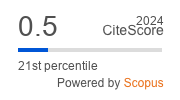UROLOGY
Epidemiology and prophylaxis of prostate cancer (CaP) has remained a pressing and challenging issue for many decades. One of its aspects is the role of food additives and diet which diff er for people of various regions. Multiple dubious epidemiologic and clinical studies on this issue warrant further clinical and experimental research into the role of vitamins and microelements in different stages of prostate cancer initiation and development. The use of complex clinical and histological evaluation of urologic patients and blood sampling is viewed for vitamins as well as lipid peroxidation products and 21 microelements. The test subjects included 115 male patients of the Urology clinic – 95 patients with different kinds of prostate gland oncopathology and 20 males without prostate pathology. The results have shown a statistically significant deviation of the levels of certain substances in the blood. Patients with CaP had reduced levels of antioxidants (lycopene, vitamin Е, germanium, selenium) and increased levels of pro-oxidants (aluminum and conjugated dienes). We have demonstrated that patients with high-grade prostatic intraepithelial neoplasia (HGPIN) have decreased blood levels of vitamin C, total carotenoids, germanium, selenium and increased levels of aluminum and conjugated dienes. Malignant transformation of prostate gland cells is associated with a decreased blood level of antioxidants (lycopene, carotenoids, vitamin Е, vitamin C, germanium, sulfur, selenium) and a increased level of pro-oxidants (aluminum and conjugated dienes). The aforementioned changes associated with the mechanism of prostate carcinogenesis are already detected in patients with HGPIN (precancer) with no further progression in patients with developed CaP.
The paper describes the effect of para-pharmaceutical features of Virilis containing Cordyceps sinensis, Fructus Liccii, Coix Lachrima jobi and Royal jelli on blood supply to the male reproductive system (MRS) in patients with erectile dysfunction (ED) and chronic prostatitis. The technique is Doppler ultrasound blood vessels of the penis, prostate, testicular after a single and five weeks reception of Virilis. A significant increase in blood flow of velocity of integral indicators MEAs is viewed. Research justifies the use of Virilis in patients with erectile dysfunction and hemodynamic prostatopathy.
THE ACHIEVEMENTS OF MODERN PATHOPHYSIOLOGY
This mini-review is devoted to the problem of mathematical modeling of macrophage-related processes during inflammation and immunopatohological states, especially regarding the aspect of the modeling of gene expression modulatory mechanisms and macrophage reprogramming.
CLINICAL RESEARCH
The paper presents the results of complex immunological examinations of the patients with purulent inflammatory formations of the uterus appendages. Clinical and immunopathogenetic evidence of choice of the surgical treatment and postoperative immunorehabilitation are provided. Tactics of postoperative immunorehabilitation with use a recombinant interferon-α2b are developed in patients with heavy forms of purulent inflammatory formations of the uterus appendages.
This article concludes the series of papers devoted to theoretical and practical aspects of surgical risk. It describes the theoretical and general logical methods of investigation of this complex and ambiguous phenomenon, emphasizes the need for and feasibility of using a multidisciplinary approach to solving the problem of individual prognosis in a planned surgery.
The article presents a review of the literature. The article presents the published data on the role of reticular epithelial cells in the formation of specific microenvironment in the cortex and medulla of thymic lobules. Thymic microenvironment plays a key role in T-cell differentiation. Discusses the role of medullar epithelial cells in the development of regulatory T-lymphocytes and induction of tolerance.
ORGANIZATION OF TEACHING IN HIGHER MEDICAL SCHOOL
The purpose of this study is the analytical overview of the current understanding of bioengineering and bioinformatics and prospects for further development. The rapid development of these areas in recent years has allowed scientists to go from the simple study of natural biological objects to their change and improvement, improve their beneficial properties to the creation of entirely new biological objects that do not exist in nature. Nano-, bio-, info-, cognitive technologies are the basis of the development of science and technology of the future, the transition to a fundamentally new line — renewable resources and technology, modeled on nature, using the latest technological advances.
The article provides information about I.I. Kosarev — scientist, whose scientific heritage is associated with the areas of history of medicine, ethics, deontology, bioethics, education. The authors off er to readers interesting facts from the biography of academician, considering the stages of his development as a researcher and educator.
PHARMACOLOGY
The pharmacological and pharmacognostical investigations were carried out. The necessity for development the composition of tansy flowers syrup was substantiated. The technology of production of tansy flowers syrup was demonstrated there. By means of thin layer chromatography the technique of qualitative analysis of syrup was developed to determine tiliolin, which is the main diagnostic flavonoid. Quantitative analysis of total content of flavonoids calculated as cynaroside was developed by the method of differential spectrophotometry at an analytical wavelength of 400 nm. The pharmacological studies were worked out to determine the impact on the excretory function of the kidneys of rats of tansy flowers syrups on the basis of fructose and sorbite at a dose of 50 μl/kg. It was revealed that tansy flowers syrup on the basis of fructose most eff ectively promotes diuresis due to tubular effect, while the tansy flowers syrup on the basis of sorbitol, with less expressed diuretic properties, leads to an increase in creatininuresis and saluresis, as due to the stimulation of glomerular filtration, and due to inhibition of tubular reabsorption. Administration the tansy tincture at a dose of 15 g/kg did not lead to death of animals. It proved that this medicine belongs to the class IV toxicity (low hazardous substances) according to GOST 12.1.007–76.
ISSN 2658-3348 (Online)






































